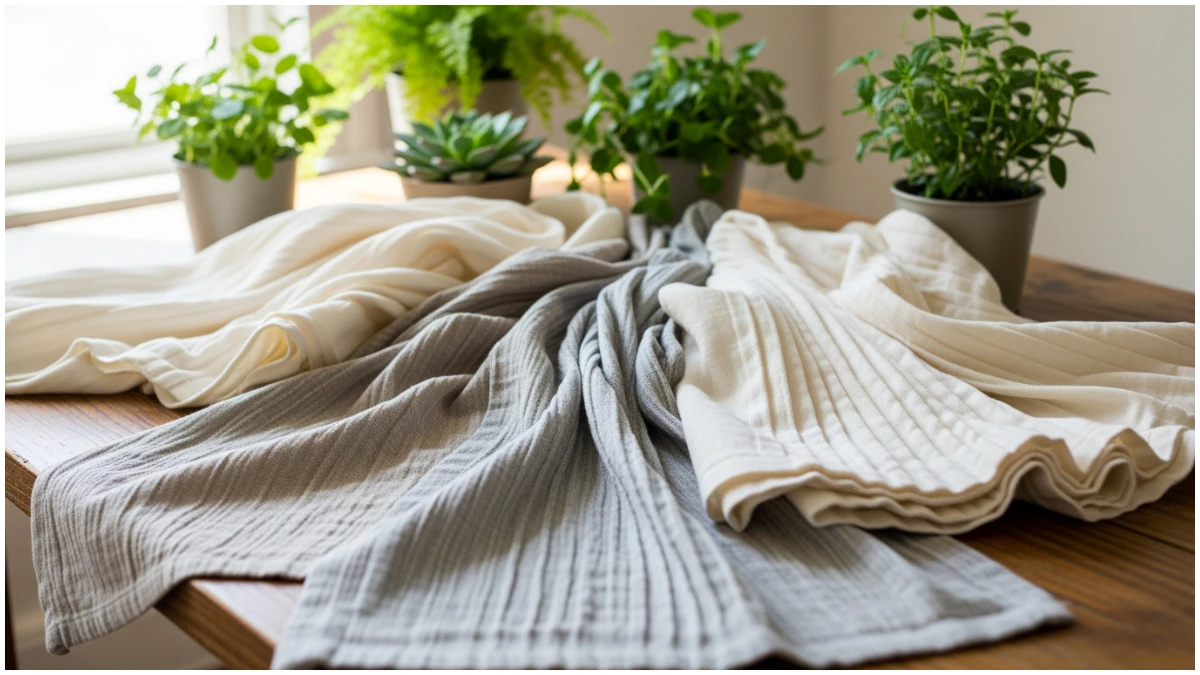The clothes we wear tell a story far beyond their style. Every garment begins its journey in fields, forests, or factories, leaving an environmental footprint that stretches from seed to closet. As the fashion industry accounts for 10% of global carbon emissions, more than all international flights and maritime shipping combined, the fabrics we choose have become one of the most powerful daily decisions we can make for the planet.
I’m Katrina, and I’ve spent years exploring the intersection of sustainability and everyday living. Welcome to this comprehensive guide where we’ll unravel the world of sustainable fabrics together. Whether you’re shopping for your first organic cotton t-shirt or curious about the environmental story behind bamboo bedding, understanding these materials empowers you to make choices that align with your values. Let’s discover how the fabrics touching your skin can help protect the world around us.
Understanding What Makes Fabric Sustainable
The True Cost of Conventional Production: Traditional textile manufacturing has transformed into one of the world’s most resource-intensive industries. Cotton cultivation accounts for 16% of global insecticides despite occupying only 2.5% of agricultural land. The production of a single conventional cotton t-shirt requires approximately 2,700 litres of water, enough to meet one person’s drinking needs for 2.5 years. Synthetic fabrics like polyester depend on 70 million barrels of oil annually, taking over 200 years to break down in landfills.
Environmental Pillars of Sustainability: Sustainable fabrics distinguish themselves through several critical factors. Water efficiency sits at the forefront, as flax for linen thrives on natural rainfall while hemp requires significantly less water compared to cotton. Chemical usage matters profoundly—organic farming eliminates toxic synthetic pesticides that contaminate soil and water, protecting both ecosystems and the health of farming communities. Biodegradability ensures natural fibres decompose harmlessly rather than releasing microplastics into oceans. The carbon footprint varies dramatically; organic cotton generates 45% less greenhouse gas emissions than conventional cotton, while recycled polyester uses 59% less energy than virgin polyester.
Social Responsibility Matters: Sustainability extends beyond environmental metrics to encompass human welfare. Conventional cotton farming exposes workers to harmful chemicals without adequate protection, while cases of forced and child labour persist in certain regions. Sustainable certifications like Global Organic Textile Standard ensure fair wages, safe working conditions, and prohibition of child labour throughout the supply chain. When you choose certified sustainable fabrics, you support dignified work conditions for the people who grow and process your clothing.
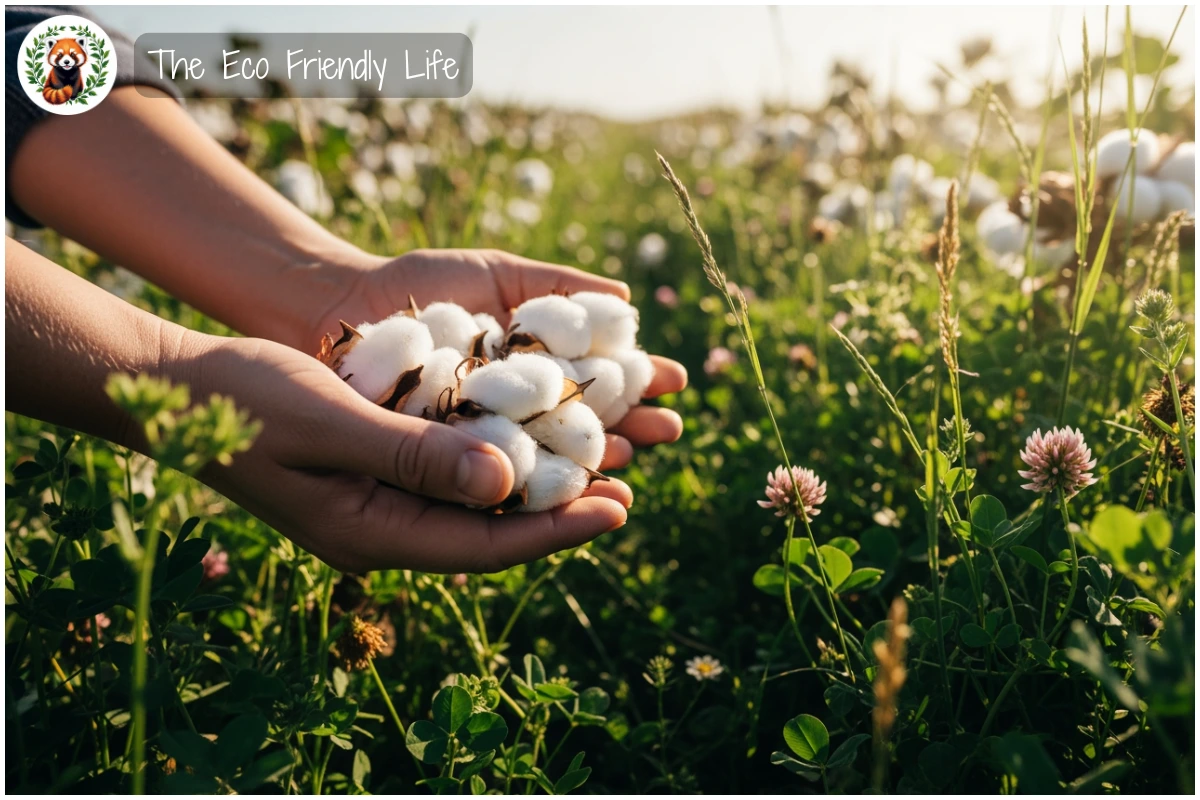
The distinction between sustainable and conventional fabrics isn’t merely theoretical—it represents a measurable difference in planetary health and human welfare. Now let’s explore the most accessible and versatile sustainable fabrics you’ll encounter when building a more responsible wardrobe.
Organic Cotton: The Gentle Giant of Natural Fibres
Cultivation Without Compromise: Organic cotton transforms one of the world’s most polluting crops into an environmentally responsible choice. Farmers grow organic cotton using natural fertilizers like compost and rely on crop rotation and biodiversity to maintain soil fertility rather than synthetic inputs. This approach eliminates the toxic chemical residues that contaminate water tables in conventional cotton regions. The 96% of organic farmers who avoid chemical pesticide use altogether demonstrate the viability of chemical-free cultivation.
Environmental Advantages: The environmental case for organic cotton extends beyond eliminating pesticides. Organic farming practices restore soil health through composting and green manures, creating resilient agricultural systems better equipped to withstand climate change. Organic cotton can reduce water consumption by up to 91% compared to conventional cotton, primarily because organic soils retain moisture more effectively and many organic farms rely on rainfall rather than irrigation. The biodiversity preserved on organic farms supports pollinating insects and soil microbial life, creating ecosystems rather than monocultures. When organic cotton eventually reaches the end of its useful life, it decomposes naturally without releasing synthetic chemicals into the environment.
The Honest Trade-offs: Organic cotton production faces legitimate challenges that deserve acknowledgment. Yields can run lower per hectare than conventional cotton, requiring more land for equivalent production. Many organic crops still rely on irrigation, particularly in certain regions, and the absence of chemical growth stimulants means more labour is needed for weeding and pest monitoring. These factors contribute to higher production costs, though many consumers find the premium worthwhile given the environmental and social benefits.
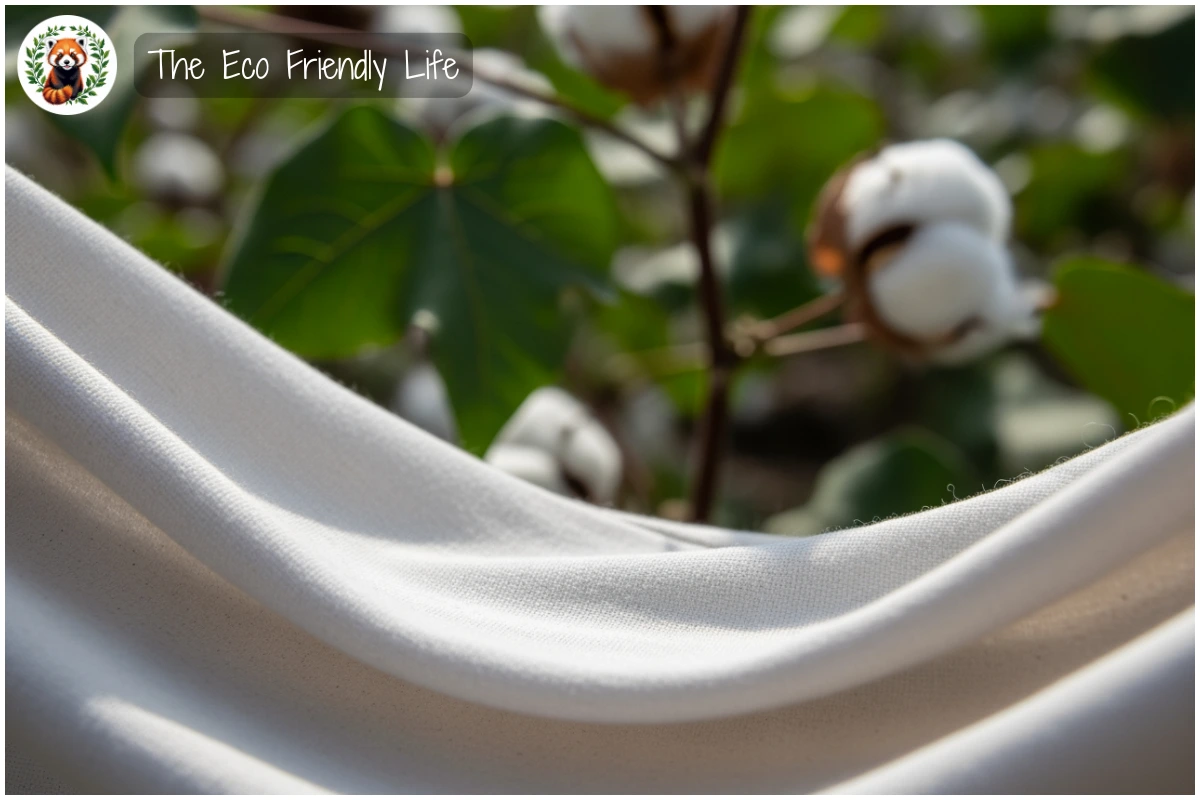
Understanding organic cotton’s strengths and limitations helps you make informed purchasing decisions. The fabric excels in everyday basics, bedding, and children’s clothing where skin contact and comfort matter most. Let’s now examine another natural fibre that takes environmental efficiency even further.
Hemp: The Resilient Regenerator
Nature’s Low-Maintenance Crop: Hemp stands apart as one of the most environmentally efficient fibres available. This remarkable plant requires significantly less water than cotton—hemp needs only 300 to 500 litres of water per kilogram of fibre compared to cotton’s 10,000 to 20,000 litres. Hemp thrives without synthetic pesticides or fertilizers, growing naturally resistant to pests and diseases. Its deep root systems prevent soil erosion, improve soil structure, and make it an excellent rotation crop that actually enhances soil fertility for subsequent plantings. Hemp even acts as a bio-accumulator, cleaning contaminated soil for future agricultural use.
Environmental Powerhouse: The sustainability credentials of hemp extend throughout its lifecycle. Hemp requires minimal irrigation and often thrives on rainfall alone, making it particularly valuable in water-scarce regions. The plant sequesters substantial amounts of carbon dioxide during growth, actively contributing to climate change mitigation. Processing hemp into fabric uses lower energy than many synthetic materials, and innovations in sustainable manufacturing continue reducing its carbon footprint. When hemp fabric reaches the end of its useful life, it biodegrades completely, decomposing naturally without contributing to landfill waste or releasing microplastics.
Practical Considerations: Hemp fabric brings distinctive characteristics to clothing and textiles. Traditionally known as coarse and stiff, modern processing techniques have dramatically improved hemp’s softness while maintaining its legendary durability. The fibre’s natural strength makes hemp garments exceptionally long-lasting, resisting wear and tear that would damage other fabrics. Blending hemp with cotton creates textiles that combine hemp’s durability with cotton’s softness, offering improved breathability, moisture-wicking properties, and faster drying compared to pure cotton fabrics.
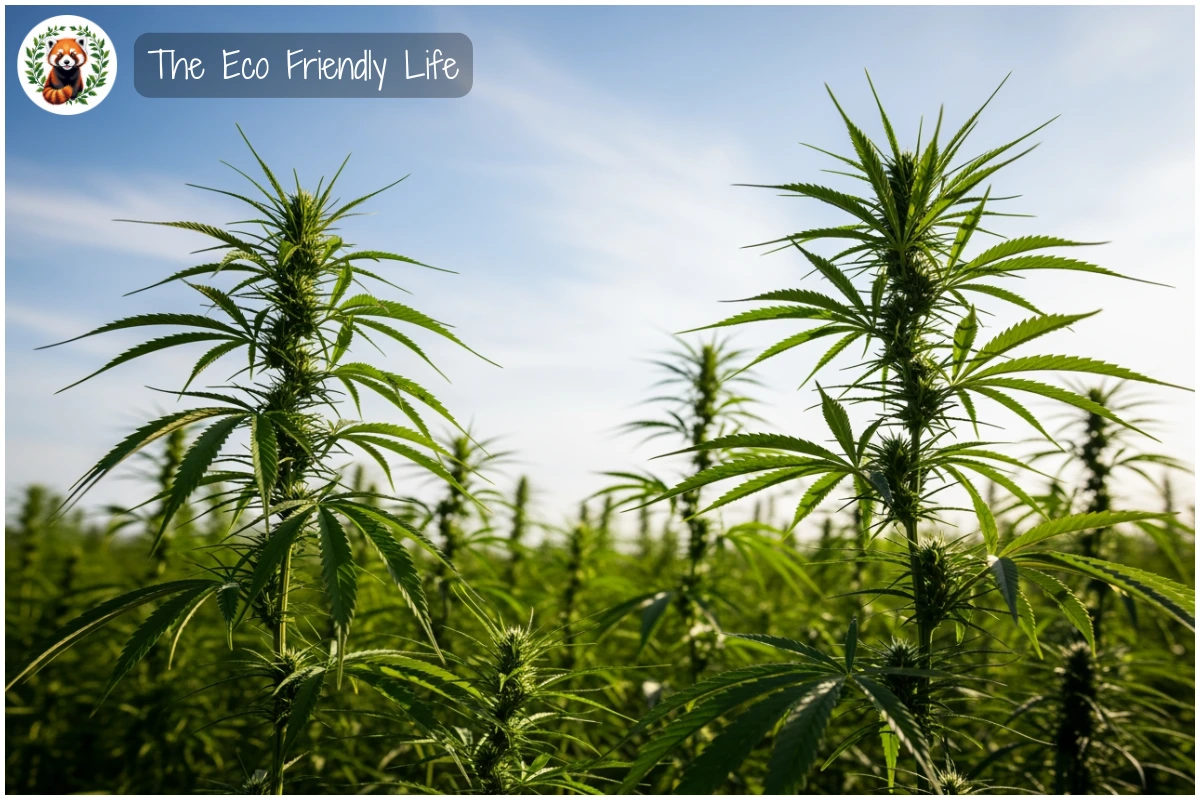
Hemp represents a genuinely regenerative approach to textile production, offering a glimpse of agriculture that works with natural systems rather than against them. While hemp and organic cotton dominate conversations about natural fibres, bamboo presents a more complex sustainability story worth understanding.
Bamboo Fabric: Understanding the Complexity
The Plant’s Genuine Benefits: Bamboo as a raw material offers impressive sustainability credentials. This grass grows remarkably fast, reaching maturity in just a few years. Bamboo regenerates naturally without replanting after harvest, requires minimal water compared to cotton, and thrives without pesticides or chemical fertilizers. Bamboo forests absorb significant amounts of carbon dioxide and release substantial oxygen into the atmosphere. These environmental advantages make bamboo cultivation genuinely sustainable.
Processing Determines Sustainability: The complexity of bamboo fabric emerges during processing. Most bamboo textiles are bamboo viscose or rayon, produced through a chemically intensive process using carbon disulfide and sodium hydroxide to dissolve bamboo pulp into fibres. This method can produce toxic waste that harms workers and the environment if not properly managed. A closed-loop process recovers and recycles these chemicals, minimizing environmental impact, but not all manufacturers employ this responsible approach. A small percentage of bamboo fabric is produced mechanically into bamboo linen—a labour-intensive, chemical-free process that yields strong, durable fabric but remains uncommon due to higher costs.
Making Informed Choices: When considering bamboo fabric, seek transparency about production methods. Bamboo viscose produced through closed-loop systems with responsible chemical management represents a more sustainable choice than conventional viscose. Mechanically processed bamboo linen offers the most environmentally sound option when available. The fabric’s final sustainability depends less on bamboo as a plant and more on manufacturing practices. Bamboo textiles processed without harmful chemicals combine the plant’s renewable nature with responsible production, creating genuinely sustainable products. Always investigate certifications and company transparency regarding their processing methods.
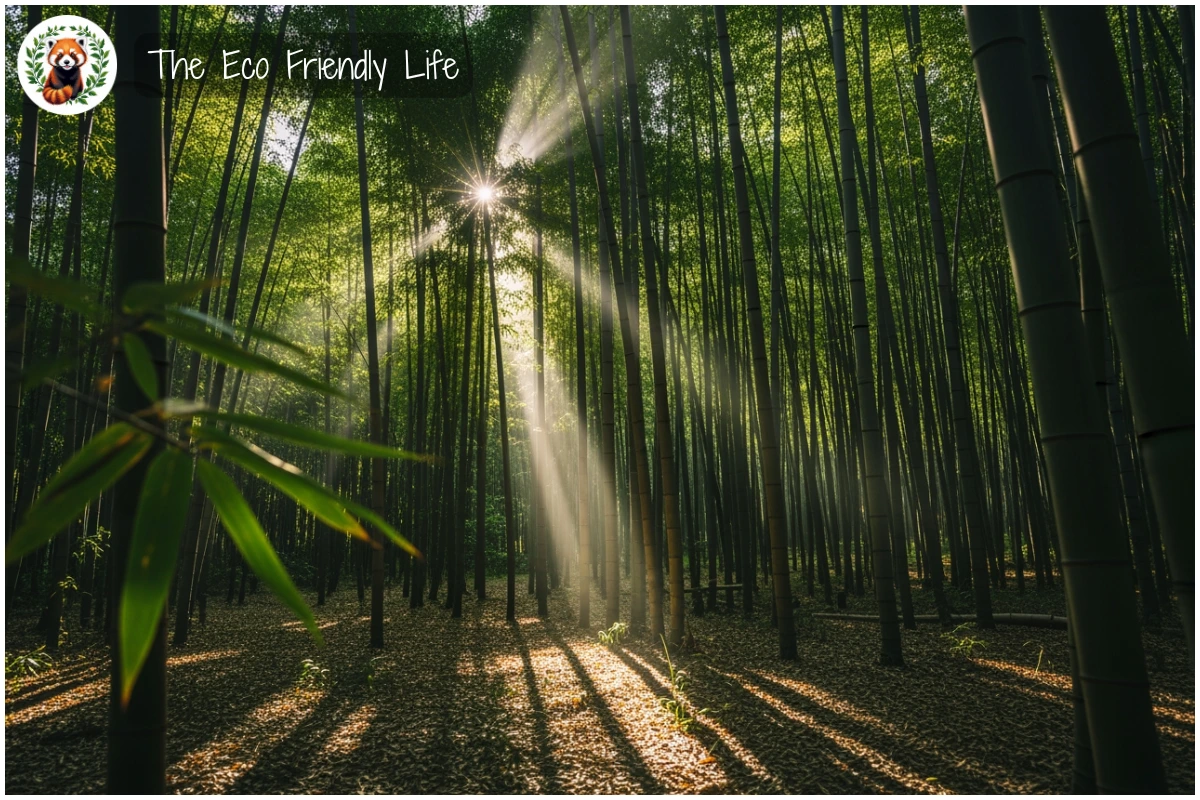
Bamboo demonstrates that sustainable materials require examining the complete production chain rather than assuming plant-based automatically means environmentally friendly. Speaking of transparency and responsible production, finding retailers who genuinely prioritize these values can transform your sustainable shopping experience.
Retailers That Support the Planet: Our Product Recommendations
Finding brands that genuinely commit to sustainable fabrics can transform your shopping experience from overwhelming to empowering. We’ve researched retailers whose practices align with the sustainable fabric principles discussed throughout this article.
Our Retailer Recommendation for Adults
Indigenous Designs: Artisan-Made Organic Excellence
Indigenous Designs exemplifies ethical fashion through their organic, fair trade clothing crafted from natural fibres. This founding B Corp has spent over 24 years working directly with artisans to create sustainable clothing as soft on the earth as it is on your skin. Their organic cotton and alpaca knitwear from Indigenous Designs showcases the beautiful craftsmanship of Peruvian artisans using certified organic cotton and low-impact dyes, perfectly embodying the sustainable cotton principles we explored earlier.
Our Retailer Recommendation for Kids/Families
Purebaby: Certified Organic for the Smallest Humans
Purebaby specializes in GOTS-certified organic cotton baby and children’s clothing designed with both sustainability and functionality in mind. Their organic cotton clothing provides ultra-soft comfort for delicate skin while eliminating exposure to the harmful chemicals found in conventional cotton production. Each piece demonstrates how sustainable fabrics can meet the highest safety standards while supporting environmentally responsible farming practices.
These retailers prove that sustainable fabric choices exist across all life stages, making it easier to align your purchasing decisions with your environmental values. Beyond the mainstream sustainable fabrics we’ve covered, several other innovative materials deserve your attention.
Beyond Cotton and Hemp: Exploring More Sustainable Options
Linen’s Ancient Wisdom: Flax, the plant that produces linen, ranks among the most sustainable crops available. Growing primarily in cooler climates with natural rainfall, flax rarely requires irrigation, dramatically reducing water consumption. The plant needs minimal pesticides due to its natural pest resistance, protecting soil health and local ecosystems. Production processes like retting, scutching, and hackling efficiently extract fibres while minimizing waste. Even byproducts serve purposes—flax seeds become food and oil while woody remnants provide animal feed. Linen’s exceptional durability means garments last for decades, reducing replacement frequency and overall consumption.
Tencel’s Closed-Loop Innovation: Lyocell fibres manufactured under the TENCEL brand represent modern sustainable innovation. Produced from wood pulp sourced from certified sustainable forests, TENCEL employs a closed-loop process that recovers more than 99.8% of solvents, recycling them repeatedly to minimize chemical waste. The production process uses significantly less carbon emissions and water compared to generic lyocell and modal fibres. TENCEL fibres biodegrade naturally when mixed only with other natural materials, breaking down in soil, freshwater, and marine environments without releasing harmful microplastics.
Recycled Polyester’s Circular Potential: While not a natural fibre, recycled polyester addresses the massive problem of plastic waste. Converting post-consumer plastic bottles and textile waste into fabric diverts materials from landfills and oceans where they would persist for centuries. Recycled polyester production uses 59% less energy than virgin polyester and reduces dependence on fossil fuels. Approximately five plastic bottles yield enough fibre for one t-shirt, giving waste materials new purpose. Though still synthetic, recycled polyester represents a significantly more sustainable choice than virgin polyester for applications where synthetic performance characteristics are necessary.
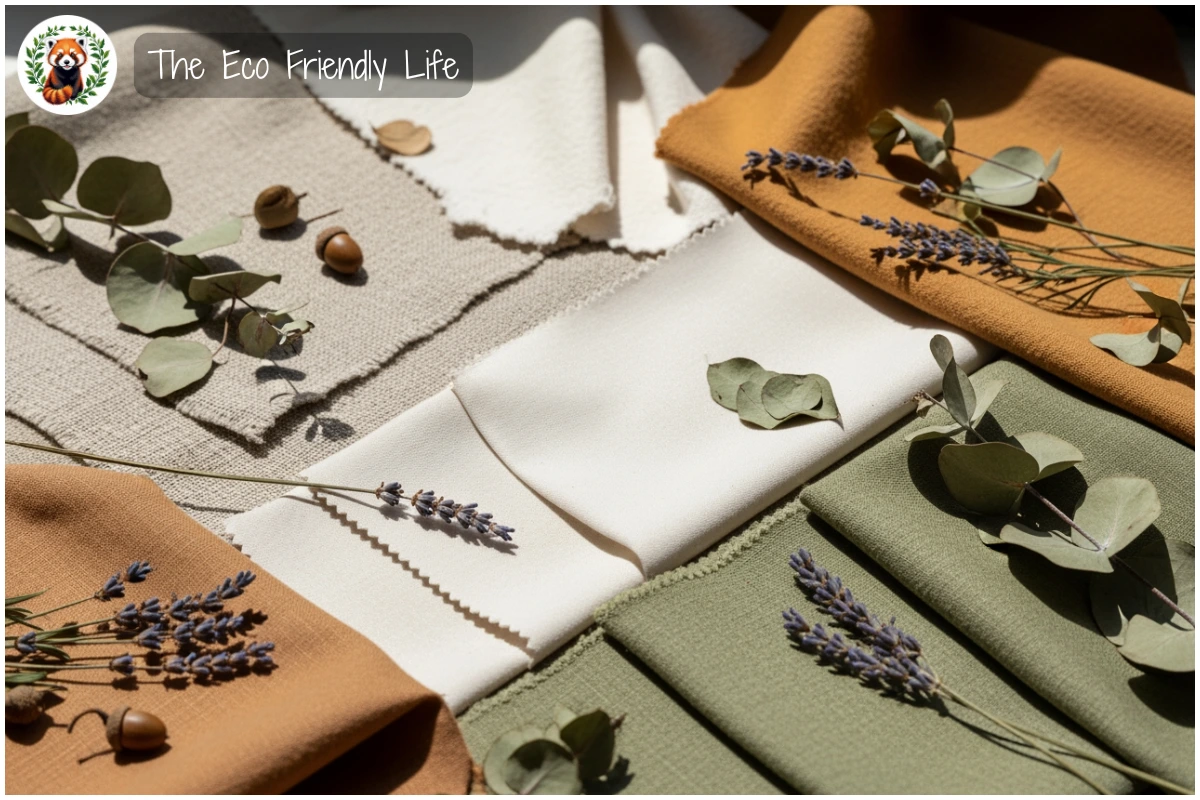
The diversity of sustainable fabric options means you can find environmentally responsible choices for virtually any application, from breathable linen for summer wear to high-performance recycled synthetics for activewear. Understanding these materials is just the beginning—putting knowledge into daily action creates the most meaningful impact.
Practical Daily Tips You Can Action Today
| Tip | How to Implement | How This Helps |
|---|---|---|
| Read clothing labels carefully | Check fibre content and look for certifications like GOTS, OEKO-TEX, or Organic Content Standard before purchasing | Ensures you’re buying genuinely sustainable materials rather than greenwashed products |
| Wash clothes less frequently | Air out garments between wears and spot-clean stains rather than automatic washing | Extends fabric life while reducing water consumption, energy use, and microplastic release |
| Use cold water for laundry | Set your washing machine to cold or 30°C maximum for most sustainable fabrics | Reduces energy consumption by up to 90% while preventing shrinkage and colour fading |
| Choose natural detergents | Select eco-friendly, biodegradable detergents without phosphates or harsh chemicals | Protects natural fabric fibres and prevents chemical contamination of water systems |
| Air dry instead of tumble drying | Hang clothes to dry naturally or use no-heat tumble settings | Dramatically reduces energy consumption and extends garment lifespan |
| Buy fewer, better quality items | Invest in well-made pieces from sustainable fabrics rather than fast fashion multiples | Reduces overall consumption, waste, and environmental impact while saving money long-term |
| Support transparent brands | Research companies that disclose their supply chains and manufacturing practices | Encourages industry-wide accountability and rewards genuine sustainability commitments |
| Donate or recycle responsibly | Take unwanted textiles to legitimate textile recycling programs or charity organizations | Keeps materials out of landfills and supports circular economy systems |
| Learn basic mending skills | Repair small tears, replace buttons, and fix hems rather than discarding garments | Extends clothing life significantly and reduces textile waste |
| Choose versatile, timeless pieces | Select classic styles in sustainable fabrics that work across seasons and years | Reduces need for frequent replacement and combats fast fashion trends |
These practical actions transform sustainable fabric knowledge into daily habits, creating meaningful environmental impact through consistent small choices. As you implement these tips, you might naturally have questions about sustainable fabrics—let’s address some of the most common ones.
Frequently Asked Questions
How can I identify genuinely sustainable fabrics when shopping?
Look for third-party certifications on labels like GOTS for organic textiles, OEKO-TEX Standard 100 for chemical safety, or FSC certification for forest-based fibres. Check the fibre content tag and research the brand’s sustainability claims using resources like the Good On You app.
Are sustainable fabrics more expensive and worth the investment?
Sustainable fabrics often cost more initially due to responsible farming and manufacturing practices, but superior durability means they last longer and perform better over time. The true value includes environmental protection, worker welfare, and reduced exposure to harmful chemicals.
Can I wash sustainable fabrics in my regular washing machine?
Yes, most sustainable natural fabrics wash easily in standard machines using cold water and gentle cycles. Avoid fabric softeners with organic cotton and hemp, air dry when possible, and wash less frequently to extend fabric life and reduce environmental impact.
What should I do with worn-out sustainable fabrics?
Natural fibres like organic cotton, hemp, and linen can be composted if chemical-free or donated to textile recycling programs. Many municipalities and organizations collect textiles for recycling, while some brands offer take-back programs for responsible disposal.
Organizations to Support: Our Recommendations
Consider supporting these organizations working to transform textile production and protect environmental resources:
- Textile Exchange works globally to accelerate sustainable fibre and materials production through comprehensive standards, supply chain certification, and industry collaboration. Their Climate+ strategy aims to reduce greenhouse gas emissions from fibre production by 45% by 2030. Make a donation to support their mission and access resources that help advance sustainable material adoption across the industry.
- Canopy Planet collaborates with fashion brands and viscose producers to protect ancient and endangered forests from textile production. Their CanopyStyle initiative includes over 550 brands working to eliminate forest destruction and advance next-generation alternatives. Support their forest conservation work through donations that directly protect forests and climate.
- Fashion Revolution campaigns for transparency, accountability, and sustainability across the global fashion industry. They publish the annual Fashion Transparency Index that ranks major brands on social and environmental disclosure, empowering consumers to hold companies accountable. Donate to Fashion Revolution to fund research, advocacy, and educational programs that drive systemic industry change.
Supporting these organizations amplifies your individual sustainable fabric choices into collective action for industry transformation.
Resources and Further Reading
Deepen your understanding of sustainable fabrics with these authoritative resources:
- Textile Exchange Preferred Fiber and Materials Matrix provides an interactive tool to assess and compare the environmental performance of different fibres, sustainability standards, and certification programs. Access comprehensive data and insights at the Fiber and Materials Matrix to make informed material choices.
- Good On You Brand Directory offers sustainability ratings for over 6,000 fashion and beauty brands based on environmental impact, labour conditions, and animal welfare. Visit Good On You to check your favourite brands and discover sustainable alternatives.
- Global Organic Textile Standard (GOTS) sets the leading international standard for organic textile processing with environmental and social criteria throughout the supply chain. Learn about certification requirements and find certified brands at GOTS.
These resources provide ongoing education and practical tools to support your journey toward more sustainable fabric choices.
Our Related Articles

Eco-Friendly Parenting Explained
The world is changing faster than ever before, with environmental concerns becoming increasingly urgent priorities for families worldwide. More parents are awakening to the reality…
Read More
Understanding Natural Approaches To Health And Beauty
In today’s world, the conversation around health and beauty has shifted dramatically. Rather than chasing quick fixes or unproven trends, people worldwide are rediscovering what…
Read MoreConclusion
Sustainable fabrics represent far more than a shopping preference—they embody a fundamental shift in how we relate to the clothes we wear and the planet we inhabit. From organic cotton’s pesticide-free fields to hemp’s regenerative growth, from responsibly processed bamboo to innovative recycled materials, each sustainable fabric choice reduces environmental harm while supporting ethical production systems. The power to transform the textile industry rests not with distant corporations or policymakers alone, but with everyday decisions made in stores, laundry rooms, and closets worldwide.
Your journey toward sustainable fabrics begins with a single choice—perhaps an organic cotton t-shirt, a durable hemp tote, or linen bedding that will last for years. These individual actions accumulate into collective impact, sending clear signals that consumers demand transparency, environmental responsibility, and human dignity throughout the fashion supply chain. Understanding sustainable fabrics empowers you to align your wardrobe with your values, wearing clothes that feel good because they do good.
What sustainable fabric change will you make first, and what obstacles or questions do you encounter when trying to shop more sustainably? Share your experiences and insights in the comments below—your perspective helps build a community of conscious consumers supporting each other in this important transition.


